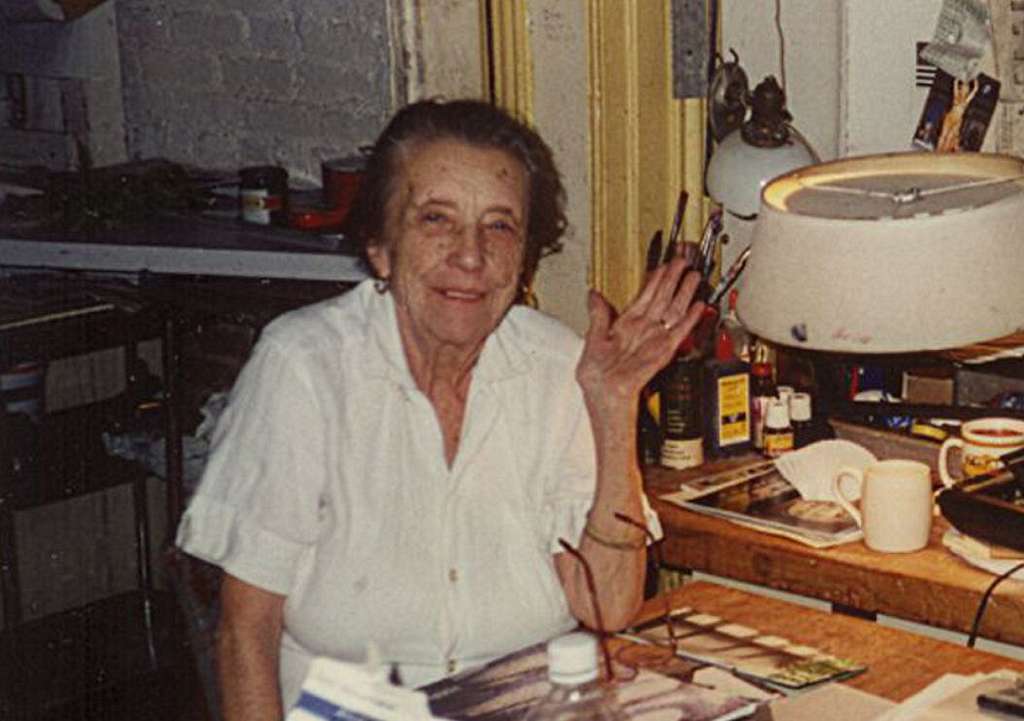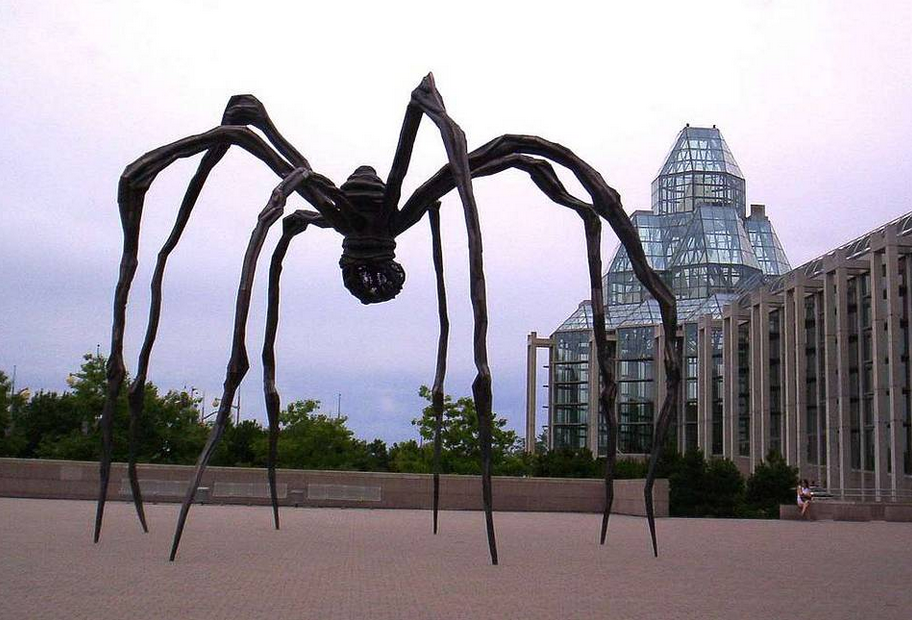Louise Bourgeois: The Shadows of Fear, Memory, and Maternal Power
Fear, memory, and maternal power intertwine in Louise Bourgeois’ Maman and the intimate, haunting exploration of her Cells series.

In the crisp autumn air, Maman stands still—its shadow stretching like a dark warning over the gallery’s entrance. The 30-foot spider, poised and watchful, guards the National Gallery of Canada in Ottawa like a silent predator. As you approach, a creeping fog wraps around its bronze legs, and in the fading light, the spider seems to pulse with life. It’s easy to imagine Maman coming to life in the cold moonlight, an eerie specter towering over the landscape. Louise Bourgeois' Maman is no ordinary sculpture—it’s a nightmare materialized, embodying primal fears that rise to the surface this time of year.
With Halloween fast approaching, Bourgeois' work takes on a darker resonance. It invites us into a world where the familiar is warped, and where protection carries the weight of threat. Bourgeois creates a web of contradictions—her art mesmerizes and repels in equal measure. Beneath Maman’s long, spindly legs, the space between comfort and dread feels razor-thin.
Maman: The Spider in the Shadows
Louise Bourgeois’ Maman isn’t just a sculpture—it’s a towering embodiment of our deepest fears. As you stand beneath it in the twilight, the looming figure casts long, skeletal shadows that shift with the breeze. The fog thickens, wrapping the spider’s legs in wisps of white, making it appear both fragile and menacing. The sac of marble eggs dangles ominously beneath, a reminder of the spider’s dual nature: a mother capable of giving life, but equally capable of striking without warning.
“There’s a chilling duality in Maman,” says ART Walkway’s editor Panu Syrjämäki. “Standing beneath it, you feel protected, yet the threat of being crushed lingers—an embodiment of Bourgeois’ view of motherhood.” The fog swirling around Maman only heightens this unease, as if the spider might disappear into the mist, leaving you alone in the shadow it casts.
Spiders, by their nature, evoke primal fear. In the eerie light of dusk, Maman taps into ancient, instinctual anxieties—creatures that spin webs in the shadows, lying in wait for their prey. Even as the moon rises, casting an otherworldly glow on the bronze, you can’t shake the feeling that you are trapped in a web of fascination and fear. The sac of eggs glistens in the dim light, hinting at both life and destruction, while the spider’s massive legs stretch out like the grasping hands of an unseen force.
Art as a Haunted House
As you move through Bourgeois’ work, it feels less like walking through a gallery and more like stepping into a haunted house. The shadow of Maman leads you into her Cells, smaller cages where memories and trauma are trapped. These Cells are cages that seem to hum with ghosts, each space like a dark corner of the mind. The objects within—a chair, a mirror, a bed—become sinister, as though they belong to the phantoms of Bourgeois’ past. The low light of the gallery adds to the unsettling atmosphere, casting eerie reflections on the cold surfaces of her sculptures.
“Entering a Bourgeois Cell is like stepping into a mind fractured by trauma,” says Syrjämäki. “It’s an unsettling experience. You feel like you're trespassing on something deeply personal, yet you're compelled to stay and confront it.” In the dim lighting, these Cells become emotional traps—spaces where time seems to stand still, and the viewer is left to face the memories Bourgeois has locked inside.
The Cells are like haunted rooms, filled with memories that refuse to fade. The tension in these spaces is palpable, like the air before a storm, where the familiar becomes strange, and the comforting turns sinister. In the eerie light of an October evening, Bourgeois’ art seems to whisper with hidden stories—each Cell a container for something fragile, yet terrifying, as if the past might escape at any moment.

The Terror of the Familiar
Bourgeois’ genius lies in her ability to turn the familiar into something unsettling. A mother, a home, a body—symbols of safety and care—are transformed into figures of dread. Beneath the pale glow of moonlight, these forms warp into something unrecognizable. Maman itself, a spider-turned-mother, is an emblem of this distortion. What should feel nurturing instead feels suffocating, like a web tightening around you.
“Bourgeois doesn’t just twist forms; she twists meanings,” explains Syrjämäki. “A mother becomes a spider, a home becomes a cage, and the body becomes a battleground.” This psychological twisting deepens the impact of her work. In Bourgeois’ world, even the most comforting symbols carry an undercurrent of danger, as if the line between protection and control, love and fear, could snap at any moment.
The familiar becomes unfamiliar in the eerie autumn light, and as you walk through the gallery, you can’t help but feel like something is watching. The sculptures seem to shift and breathe, casting long, sinister shadows that stretch toward you. Bourgeois’ art pulls you into this liminal space between comfort and discomfort, safety and danger—a space that, in the spirit of Halloween, feels more alive than ever.
Legacy: A Web of Fear and Fascination
Louise Bourgeois’ work continues to haunt the art world, her sculptures casting long, lingering shadows across contemporary art. The power of her work lies in its honesty—a willingness to confront the darkness within and pull it into the light. Her legacy has inspired countless artists to face their own fears, to explore the hidden recesses of the mind, and to embrace the discomfort that comes with it.
“Bourgeois had no fear of darkness,” says Syrjämäki. “She faced it directly and made us face it, too. Her art is not about beauty; it’s about truth, and that’s far more powerful.”
In the shifting light of autumn, Bourgeois’ work takes on an even more visceral quality. The fog rolls in, the moon casts an ethereal glow, and her sculptures loom like silent sentinels, their watchful presence an eerie reminder of the fragility of the world they inhabit.
Bourgeois’ art asks us to confront what we fear most—not the loud, obvious terrors, but the ones that lurk in the corners of our minds. As you stand before Maman under the cold light of the moon, it isn’t just the sculpture’s shadow that stretches toward you—it’s your own. And in that moment, you realize that you, too, are caught in Bourgeois’ web.
ART Walkway News





